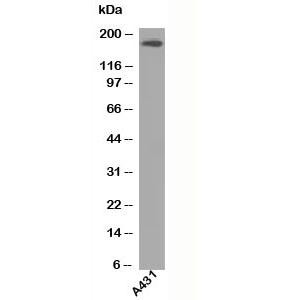Cookie-Einstellungen
Diese Website benutzt Cookies, die für den technischen Betrieb der Website erforderlich sind und stets gesetzt werden. Andere Cookies, die den Komfort bei Benutzung dieser Website erhöhen, der Direktwerbung dienen oder die Interaktion mit anderen Websites und sozialen Netzwerken vereinfachen sollen, werden nur mit Ihrer Zustimmung gesetzt.
Konfiguration
Technisch erforderlich
Diese Cookies sind für die Grundfunktionen des Shops notwendig.
"Alle Cookies ablehnen" Cookie
"Alle Cookies annehmen" Cookie
Ausgewählter Shop
CSRF-Token
Cookie-Einstellungen
FACT-Finder Tracking
Individuelle Preise
Kundenspezifisches Caching
Session
Währungswechsel
Komfortfunktionen
Diese Cookies werden genutzt um das Einkaufserlebnis noch ansprechender zu gestalten, beispielsweise für die Wiedererkennung des Besuchers.
Facebook-Seite in der rechten Blog - Sidebar anzeigen
Merkzettel
Statistik & Tracking
Endgeräteerkennung
Kauf- und Surfverhalten mit Google Tag Manager
Partnerprogramm

| Artikelnummer | Größe | Datenblatt | Manual | SDB | Lieferzeit | Menge | Preis |
|---|---|---|---|---|---|---|---|
| NSJ-V2107-20UG | 20 µg | - | - |
3 - 10 Werktage* |
332,00 €
|
||
| NSJ-V2107-100UG | 100 µg | - | - |
3 - 10 Werktage* |
752,00 €
|
Bei Fragen nutzen Sie gerne unser Kontaktformular.
Bestellen Sie auch per E-Mail: info@biomol.com
Größere Menge gewünscht? Bulk-Anfrage
Bestellen Sie auch per E-Mail: info@biomol.com
Größere Menge gewünscht? Bulk-Anfrage
0.2 mg/ml with 0.1 mg/ml BSA (US sourced), 0.05% sodium azide. Epidermal Growth Factor Receptor... mehr
Produktinformationen "Anti-EGFR, clone H9B4"
0.2 mg/ml with 0.1 mg/ml BSA (US sourced), 0.05% sodium azide. Epidermal Growth Factor Receptor is a type I receptor tyrosine kinase, referred to as EGFR, ErbB-1 and HER1. When EGFR is activated by one of its ligands, it dimerizes. It can form a homodimer, heterodimers with other ErbB family members, or even a cluster of EGFRs. Activation stimulates EGFRs intracellular kinase activity. Autophosphorylation of tyrosine residues in the C-terminal domain of EGFR leads to association with proteins with phosphotyrosine-binding domains which then signal the initiation of signal transduction cascades including the JNK, MAPK, AKT, and possibly Nf-KB, pathways. Overexpression of EGFR is the cause of some types of cancer, including lung and colon cancer. It has also been linked to psoriasis, eczema and atherosclerosis, although poorly defined. Monoclonal antibody to EGFR can be used to block the extracellular ligand binding domain, therebye blocking tyrosine kinase activation and subsequent signal transduction. Protein function: Receptor tyrosine kinase binding ligands of the EGF family and activating several signaling cascades to convert extracellular cues into appropriate cellular responses. Known ligands include EGF, TGFA/TGF-alpha, amphiregulin, epigen/EPGN, BTC/betacellulin, epiregulin/EREG and HBEGF/heparin-binding EGF. Ligand binding triggers receptor homo- and/or heterodimerization and autophosphorylation on key cytoplasmic residues. The phosphorylated receptor recruits adapter proteins like GRB2 which in turn activates complex downstream signaling cascades. Activates at least 4 major downstream signaling cascades including the RAS- RAF-MEK-ERK, PI3 kinase-AKT, PLCgamma-PKC and STATs modules. May also activate the NF-kappa-B signaling cascade. Also directly phosphorylates other proteins like RGS16, activating its GTPase activity and probably coupling the EGF receptor signaling to the G protein-coupled receptor signaling. Also phosphorylates MUC1 and increases its interaction with SRC and CTNNB1/beta-catenin. [The UniProt Consortium]
| Schlagworte: | Anti-ERBB, Anti-EGFR, EC=2.7.10.1, Anti-Proto-oncogene c-ErbB-1, Anti-Epidermal growth factor receptor, Anti-Receptor tyrosine-protein kinase erbB-1, EGFR Antibody |
| Hersteller: | NSJ Bioreagents |
| Hersteller-Nr: | V2107 |
Eigenschaften
| Anwendung: | WB, IP |
| Antikörper-Typ: | Monoclonal |
| Klon: | H9B4 |
| Konjugat: | No |
| Wirt: | Mouse |
| Spezies-Reaktivität: | human |
| Immunogen: | Purified EGFR from A431 cells was used as the immunogen for this antibody. |
| Format: | Purified |
Datenbank Information
| KEGG ID : | K04361 | Passende Produkte |
| UniProt ID : | P00533 | Passende Produkte |
| Gene ID | GeneID 1956 | Passende Produkte |
Handhabung & Sicherheit
| Lagerung: | +4°C |
| Versand: | +4°C (International: +4°C) |
Achtung
Nur für Forschungszwecke und Laboruntersuchungen: Nicht für die Anwendung im oder am Menschen!
Nur für Forschungszwecke und Laboruntersuchungen: Nicht für die Anwendung im oder am Menschen!
Hier folgen Informationen zur Produktreferenz.
mehr
Hier kriegen Sie ein Zertifikat
Loggen Sie sich ein oder registrieren Sie sich, um Analysenzertifikate anzufordern.
Bewertungen lesen, schreiben und diskutieren... mehr
Kundenbewertungen für "Anti-EGFR, clone H9B4"
Bewertung schreiben
Loggen Sie sich ein oder registrieren Sie sich, um eine Produktbewertung abzugeben.
Zuletzt angesehen




